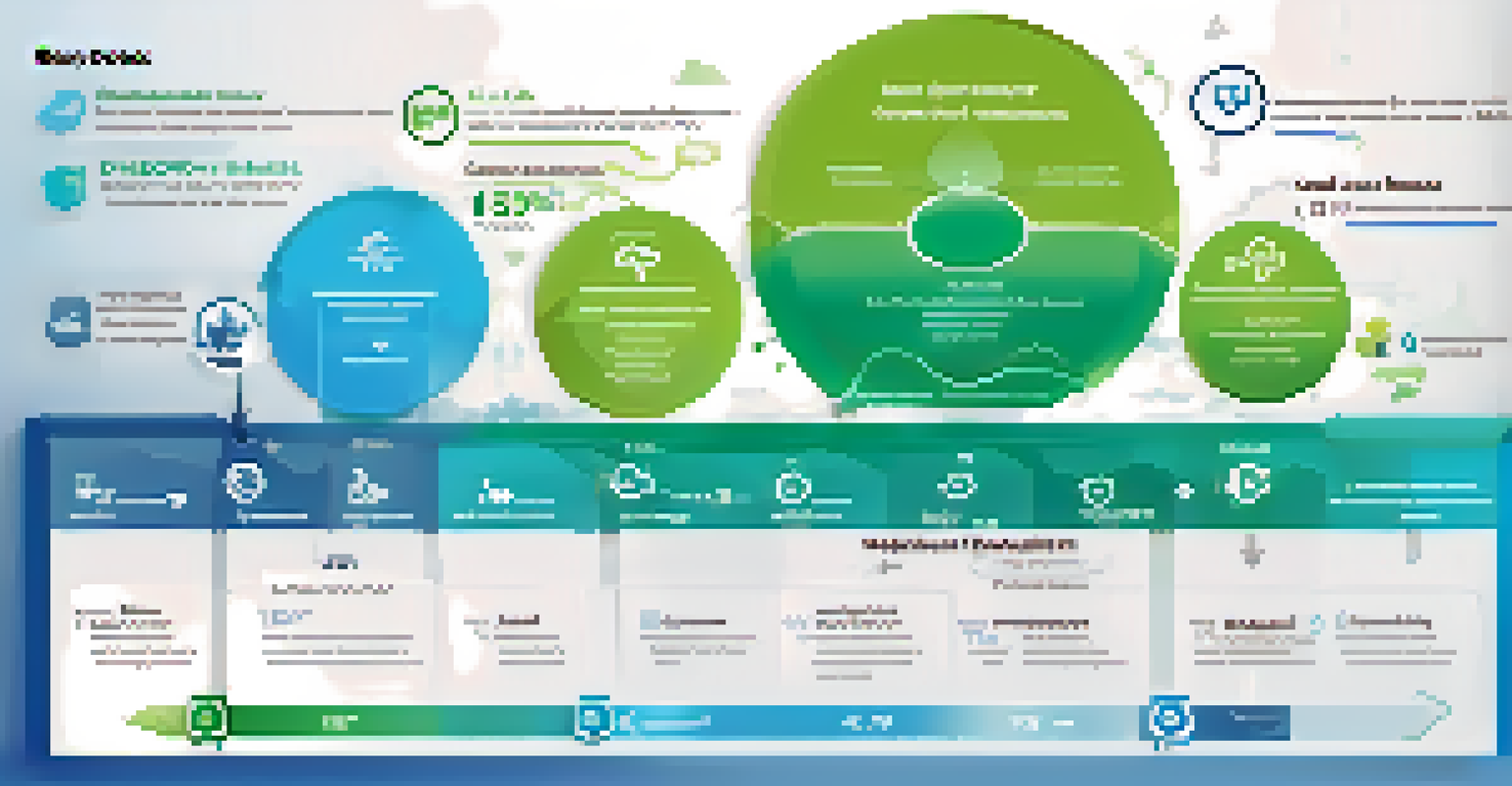DevOps Metrics: Measuring Success in Continuous Delivery

Understanding DevOps Metrics and Their Importance
DevOps metrics are essential for gauging the effectiveness of your development and operations processes. They provide insights into how well teams collaborate and deliver software, enabling organizations to identify areas for improvement. By measuring these metrics, companies can ensure that their continuous delivery pipeline is both efficient and effective.
What gets measured gets managed.
Think of metrics as a compass; they guide teams on their journey toward successful software delivery. Just like a sailor wouldn’t set sail without a compass, DevOps teams need to rely on metrics to steer their projects in the right direction. Without these guiding indicators, it’s easy to lose sight of goals and objectives.
Ultimately, understanding and utilizing DevOps metrics can lead to faster release cycles, improved quality, and enhanced customer satisfaction. Embracing these metrics not only fosters accountability but also encourages a culture of continuous improvement within the organization.
Key DevOps Metrics for Continuous Delivery
There are several critical metrics to consider when measuring DevOps success. Key metrics like deployment frequency, lead time for changes, and change failure rate can provide a comprehensive view of your team’s performance. These metrics help to evaluate how quickly and reliably your team can deliver new features and fixes.

For instance, deployment frequency measures how often code is deployed to production. A high frequency indicates a mature DevOps practice, while a low frequency may reveal bottlenecks in your pipeline. By keeping track of these metrics, you can pinpoint where improvements are needed.
DevOps Metrics Guide Improvement
DevOps metrics serve as essential indicators that help teams enhance collaboration and delivery efficiency.
Additionally, metrics like mean time to recovery (MTTR) highlight how quickly your team can address and resolve issues after a deployment. This is crucial for maintaining user trust and satisfaction, as a quick recovery minimizes disruptions.
Measuring Deployment Frequency Effectively
Deployment frequency is one of the most straightforward metrics to track. It simply counts how many times you deploy code to production over a specific time frame, such as weekly or monthly. This metric is vital because it reflects your team’s ability to deliver new features and updates to users promptly.
Continuous improvement is better than delayed perfection.
Imagine a bakery that releases new pastries daily versus one that only bakes on weekends. The daily bakery can adapt to customer feedback much faster, just as a high deployment frequency allows teams to respond quickly to user needs. Regular deployments can lead to a more agile and responsive development process.
To measure deployment frequency effectively, utilize automation tools that track and report on deployments. This can help in identifying trends over time, allowing for data-driven decisions about refining your deployment process.
Understanding Lead Time for Changes
Lead time for changes refers to the period it takes for a new idea or feature to be developed and delivered to users. This metric is crucial because it measures the efficiency of your development process from conception to deployment. A shorter lead time suggests a more agile and efficient workflow.
Think of lead time like a relay race, where each team member's speed impacts the overall time. If one leg of the race is significantly slower, it affects the final result. Similarly, if your development process has delays, it can hinder your ability to deliver value to customers.
Key Metrics Define Success
Critical metrics like deployment frequency and lead time for changes provide valuable insights into a team's performance and areas needing improvement.
By tracking lead time, teams can identify bottlenecks and inefficiencies in their workflow. Implementing continuous improvement practices can help reduce this lead time, resulting in faster delivery of features and enhancements.
Evaluating Change Failure Rate
Change failure rate is the percentage of deployments that result in a failure, necessitating a rollback or hotfix. This metric is crucial for assessing the quality of your deployments and the overall stability of your application. A high failure rate may indicate issues in testing or integration processes.
Imagine a car manufacturer that frequently recalls vehicles due to defects. This not only impacts customer trust but also affects the company’s reputation and bottom line. Similarly, a high change failure rate can lead to increased costs and diminish user satisfaction.
To improve your change failure rate, invest in robust testing and quality assurance practices. By catching issues early, you can enhance the reliability of your deployments and foster a more stable production environment.
The Role of Mean Time to Recovery (MTTR)
Mean Time to Recovery (MTTR) measures how quickly a team can recover from a failure in production. This metric is vital for understanding your organization’s resilience and ability to respond to incidents. A low MTTR demonstrates that your team can effectively address issues, minimizing downtime and user impact.
Consider MTTR as a firefighter’s response time; the quicker they arrive at the scene, the less damage there will be. Similarly, a fast recovery time ensures that issues are resolved before they escalate, maintaining customer trust and satisfaction.
Continuous Improvement is Key
Regularly analyzing DevOps metrics fosters a culture of learning and adaptation, leading to enhanced software delivery and customer satisfaction.
Improving MTTR often involves implementing effective incident response protocols and fostering a culture of collaboration. By regularly reviewing incidents and response times, teams can identify areas for improvement and enhance their recovery capabilities.
Continuous Improvement through DevOps Metrics
One of the most significant advantages of tracking DevOps metrics is the ability to drive continuous improvement. By analyzing data from key metrics, teams can make informed decisions about where to focus their efforts. This iterative process fosters a culture of learning and adaptation, which is essential for success in today’s fast-paced digital landscape.
Think of it as tuning a musical instrument; regular adjustments lead to a better performance. Similarly, regularly reviewing and adjusting your processes based on metric insights can lead to smoother and more efficient delivery.

Encouraging team members to engage with these metrics and participate in discussions about improvements can foster ownership and accountability. This collaborative approach ensures that everyone is aligned in the pursuit of excellence.
Conclusion: The Future of DevOps Metrics
As the field of DevOps continues to evolve, so too will the metrics we use to measure success. Emerging technologies and methodologies will shape how we track and interpret these indicators. Staying informed about industry trends will be crucial for teams that wish to remain competitive.
Consider the shift from traditional metrics to more holistic approaches that encompass user experience and team collaboration. The future of DevOps metrics may involve integrating customer feedback directly into the measurement process, reflecting a more user-centric approach.
Ultimately, embracing DevOps metrics as an integral part of your continuous delivery strategy will pave the way for greater efficiency, higher quality, and improved customer satisfaction in the long run.